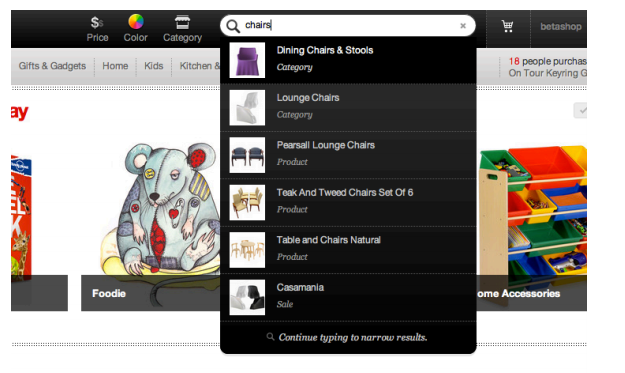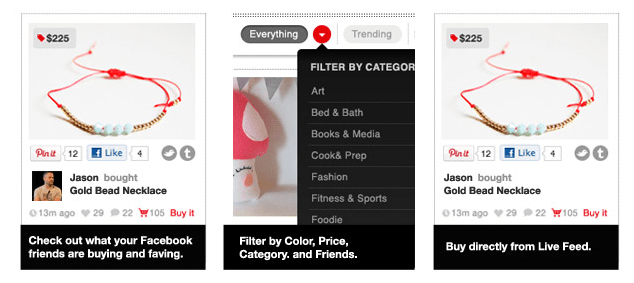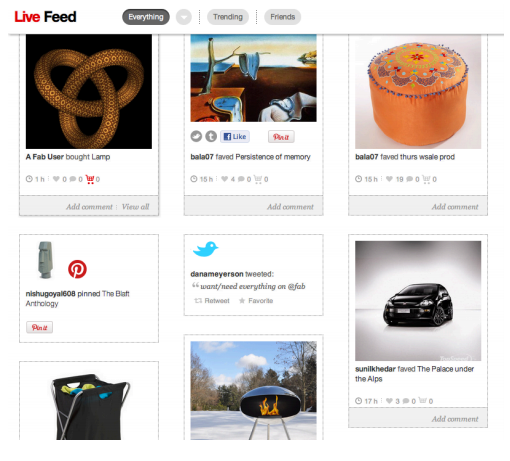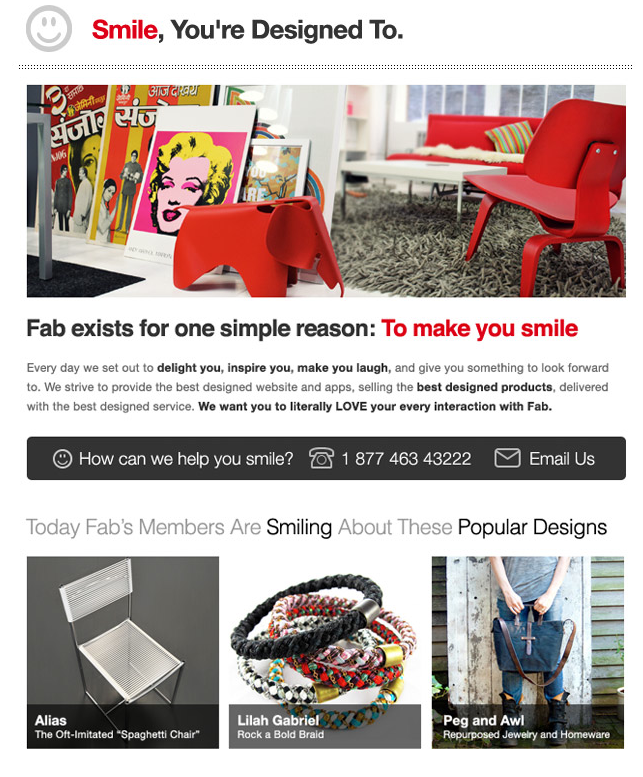Design shopping site Fab.com is debuting the next major release of its platform today, Fab 3.0, which is going live on the U.S.-based Fab.com first. The revamp focuses heavily on improved “social shopping” features, and will soon arrive in Fab’s mobile applications before rolling out to Fab’s European properties later this year.
The update offers over 100 enhancements, both big and small, but the most notable changes involve the redesigned navigation, a new feature the company calls “smile pages,” and a major update to Fab’s Live Feed which adds Facebook integration and a number of filtering options, while doing away with Google+ in favor of Pinterest.
When you log into the Fab 3.0 site, you’ll now land on a new page called “Featured Today,” which reflects the most popular sales and categories on the site that day. This is the page that appears whenever you click the “Fab.” logo from any other section of the site going forward.
The new top navigation is noticeably less cluttered than before, too, as Fab has now ditched “Stores” and “Sales” from here. Instead, there’s now an increased focus on social shopping features (the “Live Feed”) and the newly added “Search” option, which offers searching by price, category and even color. Sub-navigation directs users to favorite sections like “Art,” “Home,” “Kids,” etc., and to the right, a “live ticker” displays constantly updated trending items.

But the removal of “sales” is telling for a service which some still think of as being in the “flash sales” genre – Fab is telling the world that it’s just not that kind of site. There will still be sales, however, they’re just not the reason Fab wants customers to shop there.
“From the beginning, we never really thought of Fab as a flash sales site, we thought of ourselves as design,” explains CEO Jason Goldberg. “People appreciate Fab for discovery, or for finding products they didn’t know existed, or for delighting them, and price is not a big deal. We don’t want people to think ‘sale, sale, sale,'” he says.
As for the discovery features on Fab, they’re getting a big boost today with the updated Live Feed section. This Pinterest-like part to the Fab experience was initially rolled out in December as a part of the Fab 2.0 launch as a way to show a live, dynamic feed of what Fab’s members are buying, favoriting and sharing. As a result of the feed’s introduction just five months ago, 15% of visits to this section now result in a purchase, says Goldberg.
The most important change here is Facebook integration. Members will now be able to filter the feed to see just what their Facebook friends are buying, favoriting and sharing. It’s an obvious next step for the company, which has already worked closely with the social network on things like Facebook Timeline integration, Open Graph (implicit sharing) integration, and most recently, adoption of Facebook’s new “actions.”
The social shopping angle does well for Fab, which already saw anywhere from 15% to 30% of its traffic come from Facebook any given day, plus around 2% from Twitter, and another 2% from Pinterest. And that’s before today’s introduction of the new Pinterest “Pin it” buttons which were added in favor of Google+ (now dropped).
Google+ traffic was practically non-existent on Fab. To give you an idea of context, here are some sites that sent more traffic to Fab than Google+ did: Woot, Bing, Coolmaterial.com, Svpply, TechCrunch, NYT and Goldberg’s blog.
Also new to the Live Feed section is a filter by category, color or price option, which just generally improves the browsing experience, as well as support for buying items directly from the feed itself.
The final change is the introduction of “Smile pages,” which is just another way to feature popular items on the site, by pulling trending items onto what you can think of as “best of Fab” pages.
“How do you help people dig into a site, discover and browse?” Goldberg says of how Fab, now 4 million members strong, has approached these new changes. “It’s like the anti-Amazon. Amazon is the best place in the world if you know exactly what you’re looking for, but you don’t browse Amazon. Fab is like going shopping with your friends, or maybe you don’t know what you’re looking for, but you want the fun of discovering stuff,” he says.
The update should be live now on Fab.com.



